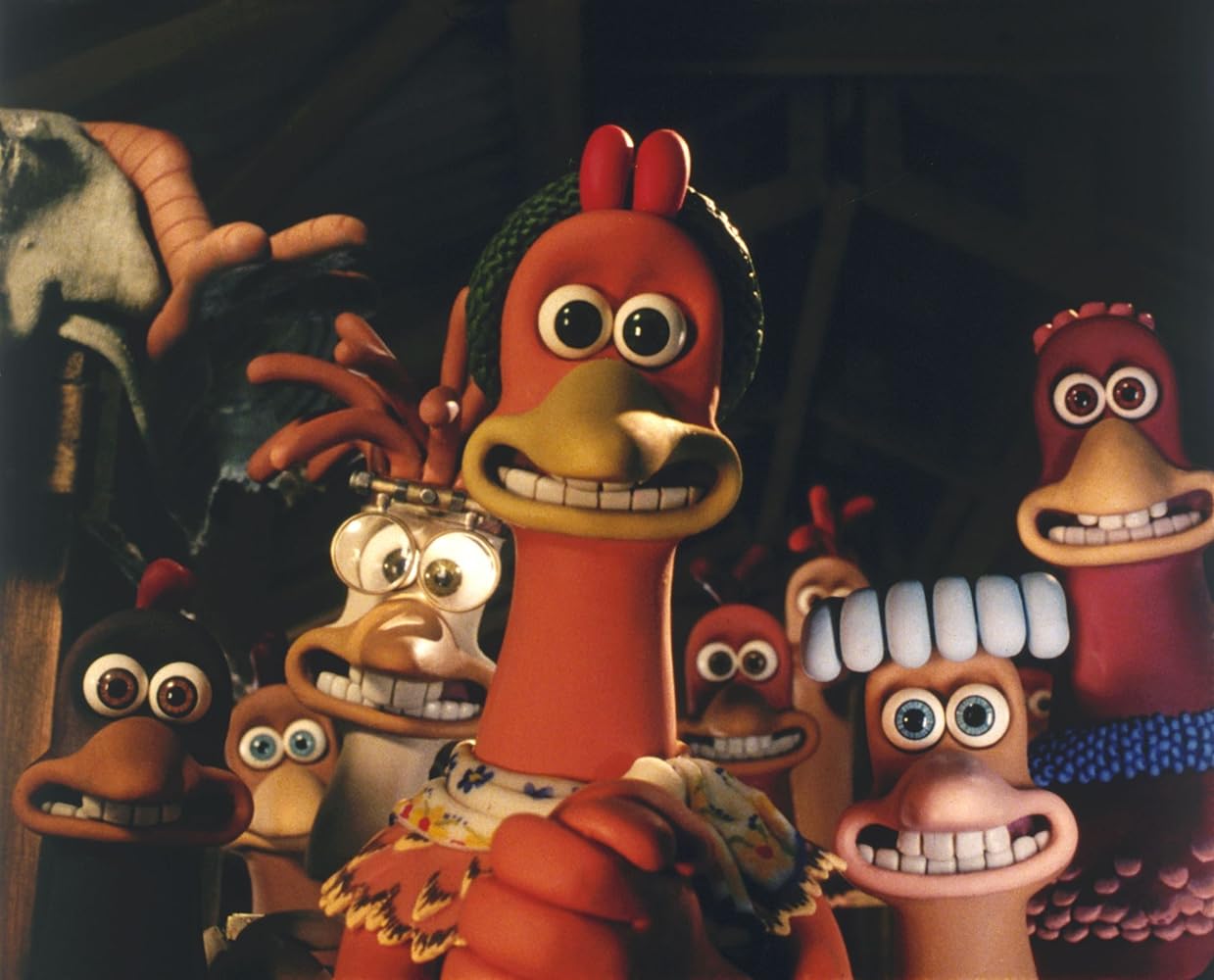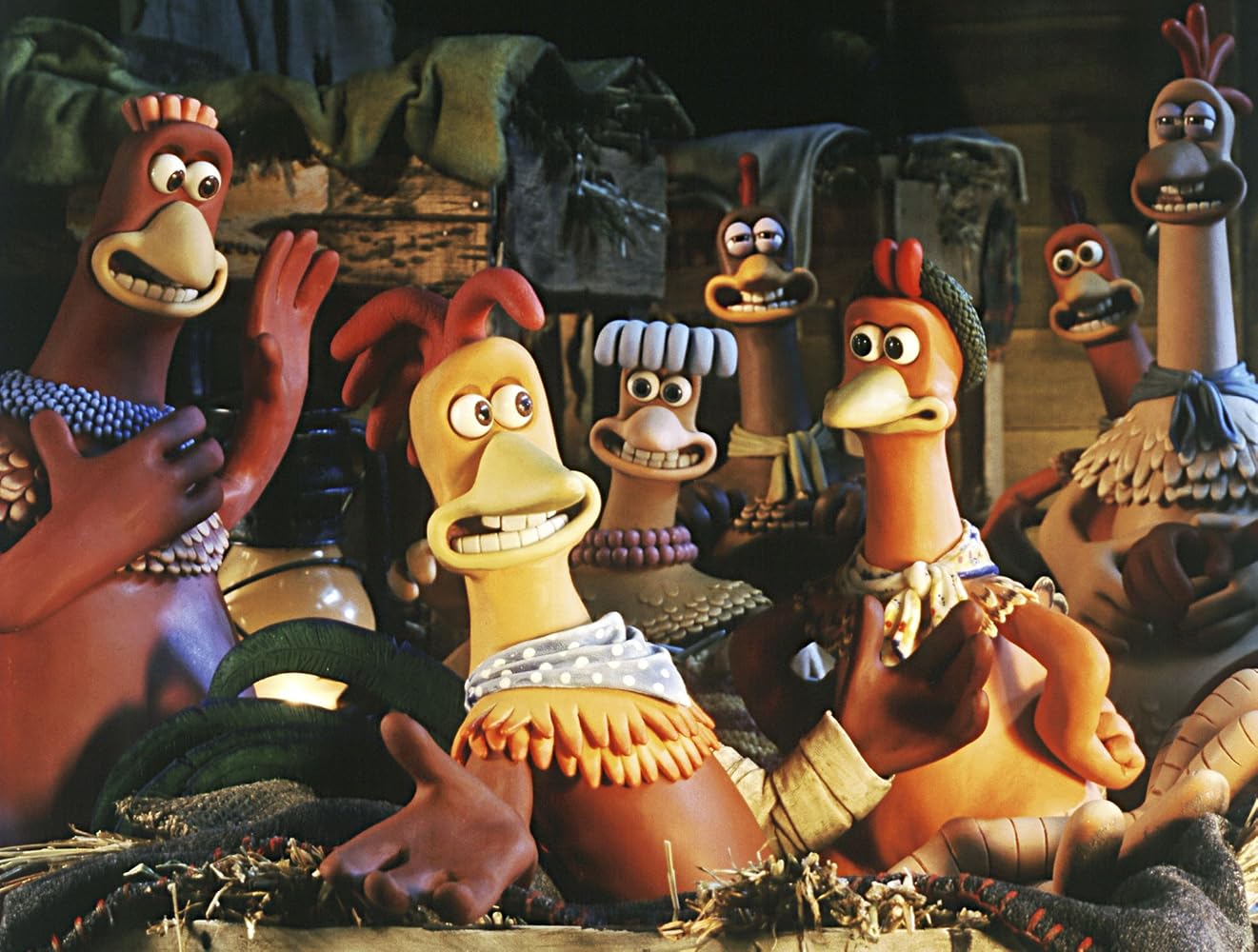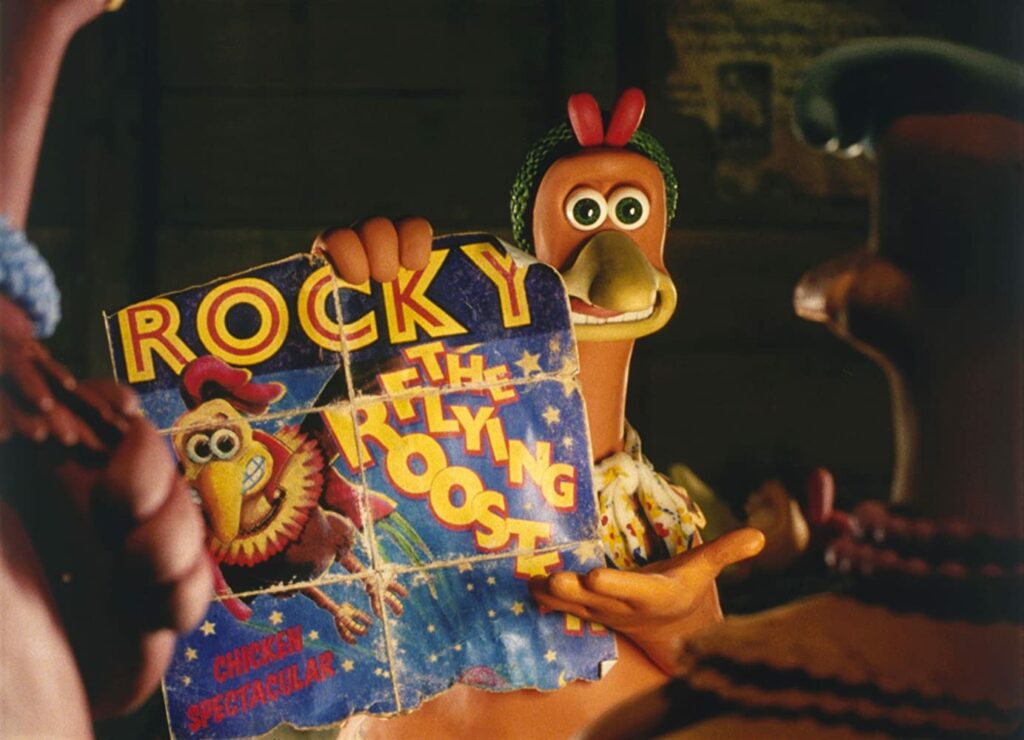Twenty years after its release, Chicken Run is still the most successful stop-motion animation ever made. That level of success is a testament to the sheer genius of Peter Lord and Nick Park’s creation, a spoof of classic British prisoner-of-war movies like The Great Escape that shuns nationalist exceptionalism for absurd, delightful comedy. Chicken Run remains one of the most unique British films ever made, with a peculiar but beloved cultural legacy that survives in everything from memes to Christmas daytime television.

The premise is a simple one. Chickens, led by the gutsy and fiercely independent Ginger (Julia Sawalha), are sick of their imprisonment within the vicious metal fence of Tweedy’s Farm. Their escape plans always come to nothing, until one day an American Rooster named Rocky (Mel Gibson) flies into the farm and offers to help the chickens take flight. What follows is a brilliantly executed, technically impressive and relentlessly funny tale of fowl play.
Aardman had already established itself as a key force in stop motion, with their beloved Wallace & Gromit short films receiving universal acclaim. Chicken Run, however, was a very different challenge. Their first ever feature film proved a mammoth task; despite Aardman working with a crew bigger than anything they had assembled before, just one minute of filming was recorded every week. More contemporary stop-motion films make subtle use of CGI to complement the physical sets and help to make the worlds ever more stunning (best represented by LAIKA, who have inherited Aardman’s status as the leaders of the genre), but the meticulousness of this treasured art form has never gone away. The patience, detail and ingenuity needed for a project like this were pioneered by Lord & Park. Chicken Run broke new technical and artistic ground in redefining what you can do with crafted balls of clay.

It also proved a seminal moment for Dreamworks, eager to break into the animation genre to compete with Disney’s domination of the field in the 1990s. Before Shrek or the How to Train Your Dragon franchises, Chicken Run laid the foundation for Dreamwork’s success over the next two decades. It wasn’t their first feature film – Antz came first two years prior – but Chicken Run propelled the studio to become a household name. Dreamworks’ films have gone on to gross over $15 billion worldwide – around $4.7 billion more than the Star Wars movies. Chicken Run was pivotal in grounding their upcoming success.
Chicken Run also lives on in our hearts and minds thanks to some memorable characters. Bunty, Babs, Mac… all unique, yet all feeling like part of the same flock. Their quirky traits lend each of them a fantastic level of detail and, in Bunty’s case, attitude (Imelda Staunton has an absolute ball in bringing’s Bunty’s sass to life). Babs, endlessly adorable and delightfully dim, often proves to be the biggest source of laughs and a crucial bringer of lighter moments even when it seems all hope is lost. But the group would be directionless without Ginger, whose determination to escape puts even Steve McQueen’s bullish escape attempts to shame.

Every comedy adventure needs pantomime villains. Here they come in the form of Mrs Tweedy (seven-time BAFTA nominee Miranda Richardson) and her dim but highly suspicious husband (the late Tony Haygarth). It’s a hilarious and subversive take on the enemy, who here doesn’t speak with an exaggerated German accent, nor dress in meticulously ironed uniforms. Instead, they trudge around in woollen clothes and welly boots, with Yorkshire accents to complete the rural farmer package. Bringing the villainy closer to home is crucial to the film’s more serious message about animal maltreatment and meat consumption, even if they are grown on British soil, but it also helps to give the couple a familiar Punch & Judy dynamic that proves irresistibly comedic. While Mrs Tweedy is plain evil, Mr Tweedy is more like a cold-hearted but obedient servant who only wants to keep his wife happy. It is Mrs Tweedy’s greed that looks set to seal the chicken’s fate, but as fans of the film will know, the hens have other ideas…
Then there is Rocky, and Aardman probably couldn’t believe it when Mel Gibson – who less than five years earlier had swept the Oscars with Braveheart – agreed to lend his voice to the Rhode Island rooster. The Herald reported that Gibson took the role because his children were big Wallace & Gromit fans, and because Park & Lord had enjoyed his performance in Maverick. Even so, to be ballsy enough to pitch a bizarre animated film about hens and chicken pies to one of the biggest movie stars of the ‘80s and ‘90s proves what lofty ambitions the pair had for the film. The fact that an American’s involvement in a British plight later proves to be built on facade and showmanship rather than anything concrete can also be interpreted as something of a historical jab. And it worked better than they could have hoped. It might not be Gibson’s most iconic role, but it is definitely his best film, and the chemistry he develops with Ginger actually feels genuine.

Chicken Run is a concept taken to its absolute maximum. The technical aspects remain impressive as ever, especially the dice with death in the chicken pie machine, and the film has earned a special place in the heart of British entertainment. The absurdity, the way that every line could leave you in infectious giggles, and the more serious message underneath all the silliness make every viewing as rewarding as the last. It is not the best stop-motion ever made, but it is one of the most important and arguably has a longer-lasting appeal than anything that has come since. It is somewhat unbelievable that a sequel is in development, currently down for a 13th November release this year (although that will almost certainly be delayed). However that turns out, the legendary status of those chickens has already been confirmed.
